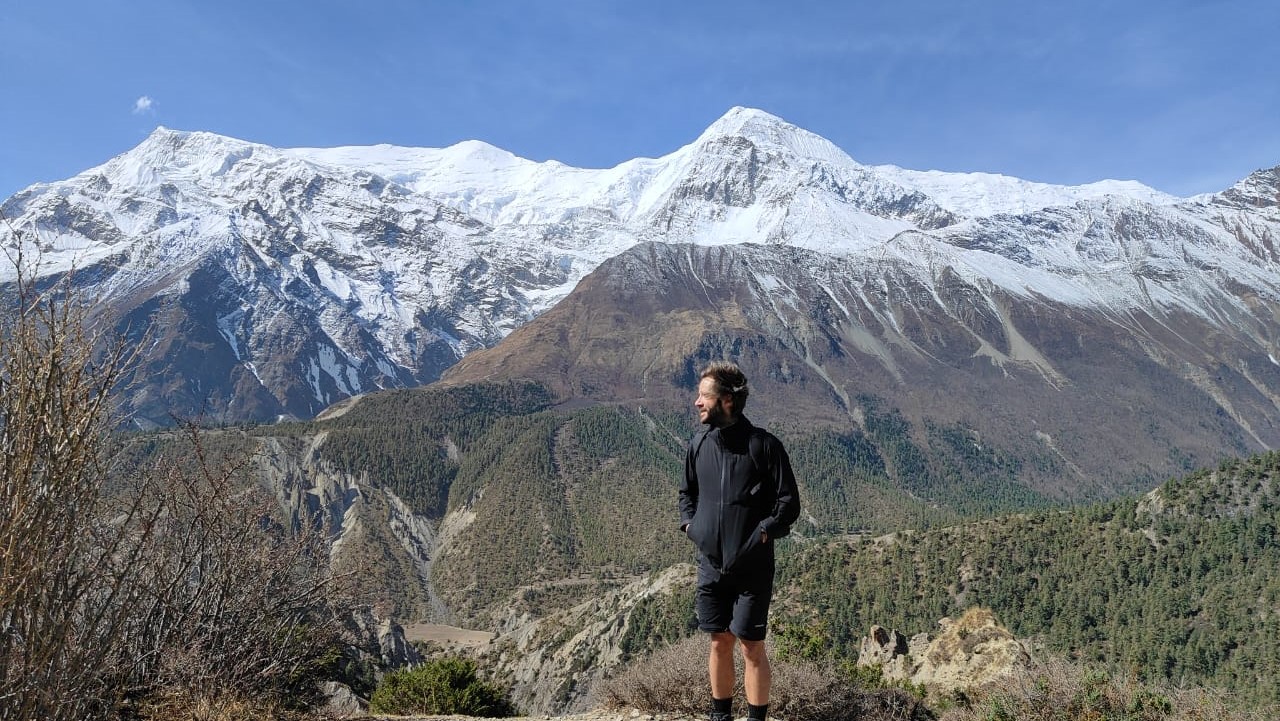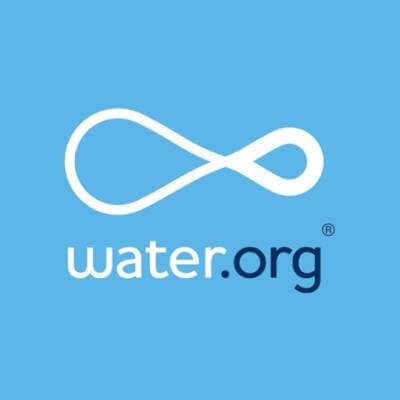17th June, 2025

Mar 06, 2024
Annapurna Circuit Trek in August
- Annapurna Circuit Trek in August: Weather, Accommodation & Foods
- Recommended Routes
- What to Bring
- Our Favorite August Itineraries
- Classic Annapurna Circuit (14 Days)
- Annapurna Circuit Trek 17 Days
- Difficulties of Annapurna Circuit Trek in August
- Why Go on Annapurna Circuit Trek in August?
- Food and Accommodation in Annapurna Circuit Trek in August
- Factors You Should Consider for Annapurna Circuit Trek in August
- Training And Preparation For Annapurna Circuit Trek In August
- Conclusion
- Annapurna Circuit Packages
Trekking the Annapurna Circuit in August presents both challenges and unique experiences amidst Nepal's monsoon season. August marks the peak of the rainy season, offering lush landscapes, blooming flora, and occasional rain showers that add a dramatic touch to the adventure.
The trek typically starts from Besisahar, leading through terraced fields and traditional villages bustling with agricultural activities. As trekkers ascend, they encounter vibrant greenery, swollen rivers, and cascading waterfalls fed by the monsoon rains. The scenery is breathtaking, with mist-shrouded peaks occasionally revealing themselves through breaks in the clouds.

ANNAPURNA ROUND TREK
This is an ideal trek for those who want to avoid the crowds and love nature. This is a great trek in the Annapurna Conservation Area that takes you to the highest pass and the deepest valley in the w...
Weather in August is characterized by warm daytime temperatures ranging from 20 to 30 degrees Celsius (68 to 86 degrees Fahrenheit) in lower elevations. However, higher altitudes and frequent rainfall can make trekking challenging, with trails becoming muddy and slippery. Trekkers must be prepared with waterproof gear, sturdy footwear, and a positive mindset for navigating the sometimes unpredictable weather.
Despite the rain, August offers quieter trails compared to peak season months, providing a more serene trekking experience with fewer crowds. Teahouses along the route provide shelter and warm hospitality, serving hearty meals that replenish energy after a day's hike.
Cultural interactions with local communities add depth to the journey, offering insights into traditional farming practices and Nepalese customs amidst the monsoon bounty. Overall, trekking the Annapurna Circuit in August is a test of determination and endurance rewarded with unparalleled natural beauty and a sense of accomplishment amidst the challenges of the rainy season.

Annapurna Circuit With Tilicho Lake Trek 15 Days
The Annapurna Circuit with Tilicho Lake Trek 15 Days is a spectacular trekking adventure that combines the classic Annapurna Circuit Trek with a rewarding detour to the stunning Tilicho Lake, one of t...
Annapurna Circuit Trek in August: Weather, Accommodation & Foods
Trekking the Annapurna Circuit in August presents a unique adventure amidst Nepal's monsoon season, characterized by distinct weather patterns, varied accommodation options, and hearty local foods.
Weather: August is the peak of the monsoon season, bringing frequent rainfall and cloudy skies to the Annapurna region. Daytime temperatures range from 20 to 30 degrees Celsius (68 to 86 degrees Fahrenheit) in lower elevations, with cooler temperatures at higher altitudes. Trekkers should expect muddy and slippery trails due to rain, necessitating waterproof clothing and sturdy footwear. Despite the rain, lush green landscapes and vibrant flora enhance the trekking experience.
Accommodation: Teahouses and lodges along the Annapurna Circuit offer basic to moderate amenities, including beds with blankets and communal dining areas. Accommodation options may vary in comfort and availability, especially in popular trekking villages like Manang and Jomsom. It's advisable to book accommodation in advance, particularly during peak trekking season.
Foods: Teahouses serve a variety of meals catering to trekkers' energy needs. Local dishes like dal bhat (rice with lentils and vegetables), noodles, soups, and momos (dumplings) are popular choices. Freshly prepared meals are essential for replenishing energy after long days of trekking. Trekkers can also find international cuisines in some teahouses, albeit with fewer options compared to peak tourist season.
Navigating the Annapurna Circuit in August requires flexibility due to weather conditions, ensuring trekkers are adequately prepared for rain and mud while enjoying the lush monsoon landscapes and warm hospitality along the way.

Tilicho Lake With Annapurna Circuit Trek
Tilicho Lake With Annapurna Circuit Trek will take you to the captivating emerald green Tilicho Lake and through Thorong La Pass (5416m) and offers some fantastic views of the Annapurna Massif ma...
Recommended Routes
Choosing the right route for the Annapurna Circuit trek in August depends on trekking experience, fitness level, and time constraints. Here are some recommended routes that highlight the diversity and beauty of the region:
- Classic Annapurna Circuit: Starting from Besisahar and proceeding clockwise or counterclockwise, this route spans approximately 160-230 kilometers (100-145 miles) depending on extensions or side trips. Highlights include crossing Thorong La Pass (5,416 meters or 17,769 feet), exploring diverse landscapes from lush valleys to arid terrain, and experiencing varied cultural encounters in villages like Manang and Marpha.
- Annapurna Sanctuary: Alternatively known as the Annapurna Base Camp trek, this route focuses on reaching the base camp of Annapurna I, one of the world's highest peaks. Starting from Nayapul or Phedi, trekkers ascend through rhododendron forests and picturesque Gurung villages before reaching the base camp, surrounded by towering peaks including Annapurna South and Machhapuchhre (Fishtail).
- Jomsom-Muktinath Trek: Beginning from Pokhara and extending towards Jomsom and Muktinath, this route offers a shorter trekking option with cultural insights into Tibetan-influenced villages and landscapes dotted with apple orchards. Trekkers can visit the sacred Muktinath Temple and enjoy panoramic views of Dhaulagiri and Nilgiri peaks.
Each route presents its challenges and rewards, from high mountain passes to cultural immersion, ensuring a memorable trekking experience amidst Nepal's Himalayan splendor.

Circumnavigate the Annapurnas where there is one peak at 8091 meters and 28 others that are over 6000 meters. You will be surrounded by the Kali Gandaki Gorge, the Marsyangdi River and Pokhara in the...
What to Bring
Packing essentials for trekking the Annapurna Circuit in August ensures comfort and preparedness amidst monsoon conditions:
- Clothing: Lightweight, quick-drying trekking pants and shorts, moisture-wicking shirts, fleece jackets, waterproof and windproof outer layers, and a warm hat and gloves for higher altitudes.
- Footwear: Sturdy, waterproof trekking boots with good ankle support, lightweight hiking socks, and sandals or comfortable shoes for evenings.
- Gear: Backpack with rain cover (30-40 liters), sleeping bag suitable for cold nights, trekking poles for stability, headlamp or flashlight with extra batteries, and a refillable water bottle or hydration system.
- Personal Items: Sunscreen, lip balm with SPF, sunglasses with UV protection, toiletries, hand sanitizer, and a basic first aid kit with medications for altitude sickness, gastrointestinal issues, and minor injuries.
- Miscellaneous: Lightweight towel, trekking map or guidebook, camera or smartphone for capturing memories, and snacks like energy bars, nuts, and dried fruits for quick energy boosts.
By packing light and efficiently, trekkers can navigate the challenges of the monsoon season while enjoying the natural beauty and cultural richness of the Annapurna Circuit.
Our Favorite August Itineraries
Discovering the Annapurna Circuit in August offers trekkers a range of itineraries to suit different preferences and durations:
- Classic Annapurna Circuit (16-21 Days): Embark on a comprehensive trek starting from Besisahar and circling around the Annapurna Massif. Highlights include crossing Thorong La Pass, exploring Manang and Marpha villages, and enjoying diverse landscapes from subtropical forests to alpine meadows.
- Annapurna Sanctuary (10-14 Days): Trek to the Annapurna Base Camp from Nayapul or Phedi, passing through lush rhododendron forests and traditional Gurung settlements. Experience panoramic views of Annapurna peaks and immerse yourself in the tranquility of the sanctuary.
- Jomsom-Muktinath Trek (7-10 Days): Shorter yet culturally enriching trek starting from Pokhara, passing through Tibetan-influenced villages like Kagbeni and Marpha. Visit the sacred Muktinath Temple and enjoy stunning views of Dhaulagiri and Nilgiri peaks.
Each itinerary offers unique experiences, whether crossing high mountain passes, immersing in local culture, or witnessing awe-inspiring Himalayan vistas. Selecting the right itinerary depends on trekking experience, fitness level, and time available, ensuring a memorable and rewarding journey through Nepal's Annapurna region in August.

Annapurna Circuit Trek
This 17 day Annapurna Circuit Trek is one of the most famous treks in Nepal. This trek takes you as high as 5416 meters to Thorong La Pass and to the Mustang Valley close to the Tibetan border. This t...
Classic Annapurna Circuit (14 Days)
The classic Annapurna Circuit trek spans approximately 160-230 kilometers (100-145 miles), offering a diverse and scenic journey through Nepal's Annapurna region. Here's a detailed itinerary for a 14-day trek:
Day 1-2: Kathmandu to Besisahar to Chamje Begin with a scenic drive from Kathmandu to Besisahar, followed by a trek to Chamje through terraced fields and traditional villages.
Day 3-4: Chamje to Upper Pisang Trek through lush forests and across suspension bridges, ascending to Upper Pisang with views of Annapurna II and Pisang Peak.
Day 5-6: Upper Pisang to Manang Continue to Manang, passing through picturesque villages like Braga and exploring ancient monasteries amidst stunning mountain vistas.
Day 7-8: Acclimatization in Manang Rest and acclimatize in Manang, with optional day hikes to Gangapurna Lake or Khangsar Village for panoramic views.
Day 9-10: Manang to Thorong Phedi Trek towards Thorong Phedi, ascending through alpine landscapes and pastures, preparing for the Thorong La Pass crossing.
Day 11: Thorong Phedi to Muktinath via Thorong La Pass Begin early for the challenging ascent to Thorong La Pass (5,416 meters or 17,769 feet), then descend to Muktinath, a sacred pilgrimage site.
Day 12-13: Muktinath to Jomsom to Pokhara Descend through arid landscapes to Jomsom, famous for its apple orchards, and catch a flight to Pokhara to conclude the trek.
Day 14: Return to Kathmandu Drive or fly back to Kathmandu, reflecting on the journey through the stunning Annapurna Circuit.
The classic Annapurna Circuit trek in 14 days offers a blend of natural beauty, cultural immersion, and challenging terrain, making it a memorable adventure for trekkers seeking a comprehensive Himalayan experience.

12 Days Annapurna Circuit Trek
The 12 Days Annapurna Circuit Trek is a world-renowned trekking adventure in Nepal that offers an extraordinary blend of natural beauty, cultural diversity, and thrilling mountain landscapes. This tre...
Annapurna Circuit Trek 17 Days
The Annapurna Circuit trek spanning 17 days allows for a more relaxed and immersive journey through Nepal's diverse landscapes and cultural heritage. Here’s a detailed itinerary:
Day 1-2: Kathmandu to Besisahar to Chamje Commence the trek with a scenic drive from Kathmandu to Besisahar, followed by a trek to Chamje through terraced fields and traditional villages.
Day 3-4: Chamje to Upper Pisang Trek through forests and across suspension bridges, ascending to Upper Pisang with views of Annapurna II and Pisang Peak.
Day 5-6: Upper Pisang to Manang Continue to Manang, exploring villages like Braga and ancient monasteries amidst stunning mountain vistas.
Day 7-8: Acclimatization in Manang Rest and acclimatize in Manang, with optional day hikes to Gangapurna Lake or Khangsar Village for panoramic views.
Day 9-10: Manang to Yak Kharka Trek through alpine landscapes and pastures, ascending gradually towards Yak Kharka.
Day 11-12: Yak Kharka to Thorong Phedi Continue the ascent towards Thorong Phedi, preparing for the Thorong La Pass crossing.
Day 13: Thorong Phedi to Muktinath via Thorong La Pass Begin early for the challenging ascent to Thorong La Pass (5,416 meters or 17,769 feet), then descend to Muktinath, a sacred pilgrimage site.
Day 14-15: Muktinath to Jomsom Descend through arid landscapes to Jomsom, famous for its apple orchards, and explore the local culture.
Day 16-17: Jomsom to Pokhara to Kathmandu Fly from Jomsom to Pokhara and then return to Kathmandu, concluding the trek with memories of the Annapurna Circuit adventure.
The extended 17-day itinerary provides ample time for acclimatization, exploration of diverse landscapes, and cultural interactions along the Annapurna Circuit, ensuring a fulfilling trekking experience in Nepal.

14 Days Annapurna Circuit Trek
The 14 Days Annapurna Circuit Trek is one of Nepal’s most iconic trekking routes, renowned for its breathtaking Himalayan panoramas, diverse landscapes, and rich cultural experiences. This extended tr...
Difficulties of Annapurna Circuit Trek in August
Trekking the Annapurna Circuit in August presents unique challenges due to the monsoon season's influence on weather and trail conditions:
Weather Conditions: August is characterized by frequent rainfall, cloudy skies, and occasional thunderstorms in the Annapurna region. Trekkers must be prepared for muddy and slippery trails, which can slow progress and increase the risk of slips or falls.
Visibility: Cloud cover may obscure panoramic mountain views, including Annapurna and Machhapuchhre peaks, reducing the trekking experience's visual rewards.
Trail Difficulty: Steep ascents and descents combined with slippery terrain require careful navigation and physical endurance. Trekking poles and sturdy footwear with good grip are essential for stability.
Altitude and Acclimatization: Proper acclimatization is crucial to prevent altitude sickness, particularly when ascending to higher altitudes such as Thorong La Pass (5,416 meters or 17,769 feet). Trekkers should plan rest days and hydrate adequately to adjust to thinner air at altitude.
Accommodation and Facilities: Teahouses and lodges along the route may experience lower occupancy due to fewer trekkers in August. Basic amenities such as hot showers and electricity may be less reliable in remote areas.
Despite these challenges, trekking the Annapurna Circuit in August offers unique rewards, including lush green landscapes, fewer crowds, and cultural interactions with local communities amidst the monsoon's bounty.

15 Days Annapurna Circuit Trek
The 15 Days Annapurna Circuit Trek is one of Nepal’s most spectacular trekking experiences, offering adventurers a complete journey through the diverse landscapes of the Annapurna region. This extende...
Why Go on Annapurna Circuit Trek in August?
Trekking the Annapurna Circuit in August presents a distinct adventure amidst Nepal's monsoon season, offering compelling reasons for adventure enthusiasts:
Lush Landscapes: August transforms the Annapurna region into a verdant paradise with lush greenery, blooming wildflowers, and cascading waterfalls fed by monsoon rains. The landscapes are vibrant and picturesque, providing a unique contrast to the arid terrain of other seasons.
Fewer Crowds: Compared to peak trekking seasons like spring and autumn, August sees fewer trekkers on the Annapurna Circuit. Trails and teahouses are less crowded, offering a more tranquil and immersive experience in nature.
Cultural Encounters: Trekking in August allows for meaningful interactions with local communities, who are actively engaged in agricultural activities during the monsoon. Learn about traditional farming practices, taste local produce, and experience Nepalese hospitality amidst the rainy season's bounty.
Challenging Terrain: The monsoon season brings challenges such as muddy trails and occasional rain showers, adding an element of adventure and physical challenge to the trek. Trekking in these conditions requires preparation and adaptability, enhancing the overall experience.
Affordable Travel: Off-peak season travel often translates to lower costs for accommodation, permits, and transportation, making August an economical choice for budget-conscious trekkers.
Photographic Opportunities: Despite occasional cloud cover, August offers unique photographic opportunities with dramatic skies, vibrant landscapes, and mist-shrouded mountain views. Capture the essence of Nepal's monsoon season in your travel photography.
Trekking the Annapurna Circuit in August is an opportunity to embrace nature's seasonal rhythms, challenge personal limits, and immerse yourself in the cultural richness of Nepal's Himalayan region. Whether you seek adventure, solitude, or cultural exploration, August promises a memorable and rewarding trekking experience amidst stunning natural beauty.

Annapurna Circuit Trek 7 Days
The Annapurna Circuit Trek 7 Days is a shorter yet rewarding adventure through Nepal’s spectacular Annapurna region. Designed for trekkers who have limited time but still want to experience the magic...
Food and Accommodation in Annapurna Circuit Trek in August
Food and accommodation along the Annapurna Circuit in August cater to the needs of trekkers amidst the challenges of the monsoon season. Here’s what to expect:
Food: Teahouses and lodges offer a variety of meals to energize trekkers. Local dishes like dal bhat (rice with lentil soup), momos (dumplings), noodles, and soups are popular choices. These meals are hearty and nutritious, providing essential calories and carbohydrates needed for trekking. During the monsoon, fresh produce may be more abundant, including vegetables grown locally despite the rains.
Accommodation: Accommodation options range from basic teahouses to more comfortable lodges in larger villages. Rooms typically include beds with blankets or sleeping bags, and some may offer attached bathrooms with hot showers (though hot water availability can vary). In remote areas, amenities may be more basic, with shared toilet facilities and communal dining areas where trekkers can socialize and share experiences.
Despite the challenges of the monsoon season, teahouse owners strive to provide warm hospitality and quality meals to ensure trekkers are comfortable during their journey through the Annapurna Circuit.

Annapurna Circuit Trek 6 Days
This amazing and very popular 6-day trek on the Annapurna Circuit starts in Kathmandu and takes you through the Annapurna Conservation Area, visiting unique culturally rich Tibetan Buddhist Gurung and...
Factors You Should Consider for Annapurna Circuit Trek in August
Trekking the Annapurna Circuit in August requires careful consideration of several factors to ensure a safe and enjoyable experience:
Weather: August is the peak of the monsoon season, characterized by frequent rainfall, cloudy skies, and occasional thunderstorms. Trekkers should be prepared for muddy and slippery trails, which can slow down progress and increase the risk of slips or falls. Waterproof clothing, sturdy footwear, and trekking poles are essential.
Altitude: The Annapurna Circuit reaches high altitudes, including Thorong La Pass at 5,416 meters (17,769 feet). Proper acclimatization is crucial to prevent altitude sickness. Plan rest days in villages like Manang to allow your body to adjust to thinner air and drink plenty of water to stay hydrated.
Physical Fitness: The Annapurna Circuit involves long days of trekking over varied terrain, including steep ascents and descents. Prior physical conditioning, focusing on cardiovascular endurance and leg strength, helps prepare for the demands of the trek.
Packing: Pack light but effectively for the trek, including essentials like waterproof clothing, warm layers, a sleeping bag suitable for cold nights, toiletries, and a basic first aid kit. Bring snacks and hydration systems to stay energized and hydrated throughout the trek.
Permits and Documentation: Obtain necessary permits, including the Annapurna Conservation Area Permit (ACAP) and Trekkers' Information Management System (TIMS) card, before starting the trek. Carry identification and insurance documents, including proof of travel insurance covering trekking activities.
Considering these factors and preparing accordingly ensures a safer and more enjoyable trekking experience on the Annapurna Circuit in August, amidst the challenges and rewards of Nepal's monsoon season.

Annapurna Circuit Trek 8 Days
The Short 8 Annapurna Circuit Trek, One of the best and popular treks in Nepal trekking around the Annapurna. Picturesque villages, turbulent river gorges, desolate high Himalayas passes, relaxing hot...
Training And Preparation For Annapurna Circuit Trek In August
Training and preparation are crucial for tackling the Annapurna Circuit trek in August, especially during the monsoon season. Here’s how to get ready:
Cardiovascular Fitness: Focus on building cardiovascular endurance through activities like hiking, jogging, cycling, or swimming. Aim to gradually increase your stamina to handle long days of trekking.
Leg Strength: Strengthen leg muscles with exercises such as lunges, squats, and step-ups. Strong legs are essential for navigating steep ascents and descents on rocky and uneven terrain.
Endurance Training: Simulate trekking conditions by going on long hikes with a weighted backpack to accustom your body to carrying gear over extended periods.
Altitude Training: If possible, undertake altitude training to acclimate your body to higher elevations. This can involve spending time at high altitudes or using altitude simulation techniques.
Flexibility and Balance: Incorporate stretching exercises and yoga to improve flexibility and balance, which are crucial for navigating challenging terrain and preventing injuries.
Gear Familiarization: Test and familiarize yourself with trekking gear, including footwear, backpack, clothing layers, and sleeping equipment. Ensure everything fits well and is comfortable for long days on the trail.
Nutrition and Hydration: Maintain a balanced diet rich in carbohydrates, proteins, and healthy fats to fuel your trekking efforts. Stay hydrated by drinking plenty of water and electrolyte-rich beverages.
By dedicating time to physical training and comprehensive preparation, you’ll enhance your endurance, resilience, and enjoyment during the Annapurna Circuit trek in August.

Annapurna Circuit Trek 9 Days
The 9 Days Annapurna Circuit Trek is a very famous trek in Nepal. The Annapurna Circuit Trek trail passes through villages inhabited by diverse ethnic groups and offers magnificent mountain scenery fr...
Conclusion
Trekking the Annapurna Circuit in August offers adventurous souls a chance to experience Nepal's natural beauty amidst the challenges of the monsoon season. From navigating muddy trails and occasional rain showers to enjoying lush landscapes and cultural encounters, the journey is both physically demanding and spiritually rewarding.
Preparation is key to tackling the trek safely and comfortably. Consider factors such as weather conditions, physical fitness, and packing essentials like waterproof gear and sturdy footwear. Train diligently to build cardiovascular endurance and leg strength, ensuring you’re ready for the rigors of high-altitude trekking.
Ultimately, trekking the Annapurna Circuit in August promises breathtaking views, cultural immersion, and personal achievement. Embrace the adventure, respect the environment, and savor each moment of this unforgettable journey through Nepal's Himalayan wonders.
Annapurna Circuit Packages
10 Days Annapurna Circuit Trek
12 Days Annapurna Circuit Trek
14 Days Annapurna Circuit Trek
15 Days Annapurna Circuit Trek
Any Questions? Let Us Know.
Recent Posts
14th June, 2025
12th June, 2025




















